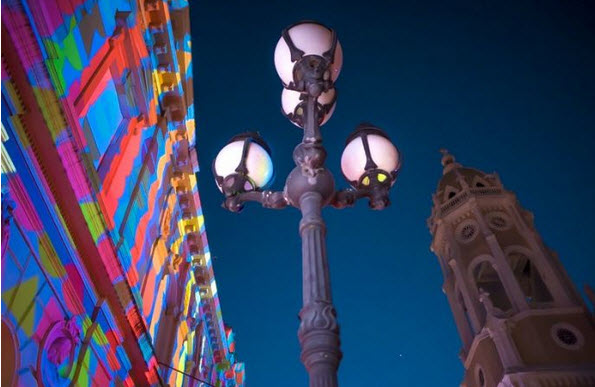Eyes will be on Cannes, France, this month as cinema fans seek a glimpse of films and filmmakers leaving their mark.
What will be absent from the famed festival is many films from the Global South.
“Panama and other Central American countries tend to be overlooked,” said Tamara Falicov, associate professor of film and media studies at the University of Kansas. “The good news is Panama is a country in the making. The Panama Film Festival is less well-known, but it’s becoming a pipeline for the most well-known film festival in the world.”
Why IFF Panama?
IFF Panama exists for its audience: because Panamanians share an immense cultural passion for cinema, always open to exchange with all nations of the world. This passion caused and supported the launch of our first festival in 2012 and has fueled its growth ever since. Today, IFF Panama is a recognized cultural cornerstone.
It is only the second year for the Panama Film Festival’s finishing fund competition, First Look, yet the winner will be presented to producers at the Marché du Film at Cannes. This year’s winner is a Dominican Republic film, “Noeli Overseas.”
If larger film festivals like Cannes can do anything for Global South filmmakers, it would be discovering the next booming film economy. It’s a win-win, Falicov said, because there’s also prestige for those who discover the next “new wave” from an underrepresented film industry.
“Film festivals have become nodes in a circuit where people will travel from festival to festival to meet with others from various countries,” Falicov said. “It’s become a whole ecosystem.”
As the number of film festivals worldwide expands, they need value-added activities to remain relevant and stand out, Falicov said. This means the emergence of screenwriting labs, networking parties and competitions like First Look, which awards an in-progress movie the funding needed to complete post-production work.
In April, Falicov was in Panama to speak about international film funding and the subtleties and issues surrounding it. She encountered young Panamanian filmmakers who were proud that their nation produced six films this year in spite of not having a film school.
She told her audiences that the kinds of cinema that typically get funded by the Global North look at issues like poverty, desperation and social problems and “reflect a certain third-worldliness.”
“If the films are too bourgeois or too wealthy-looking, they can get rejected,” Falicov said.
She suggested Global South filmmakers also look to horizontal funding, from crowd-funding campaigns to competitions like First Look. Filmmakers need to understand that judges look for movies that can cross over to an international marketplace.
“Some of these are too local and don’t have humor that can translate,” she said.
A successful blend of local and global themes can be found in Paraguay’s “Seven Boxes,” Falicov said. It’s a genre film like “The Fast and the Furious” but instead of cars, boys with pushcarts race through the markets of Asunción.
It’s a film that is incredibly compelling, with quick editing, and yet it’s in a very local space, Falicov said.
“My goal is to understand what is this transnational art house aesthetic,” she said.
Falicov co-edits a book series on film festival research with Dutch film scholar Marijke de Valcke called “Framing Film Festivals” for Palgrave Macmillan.
